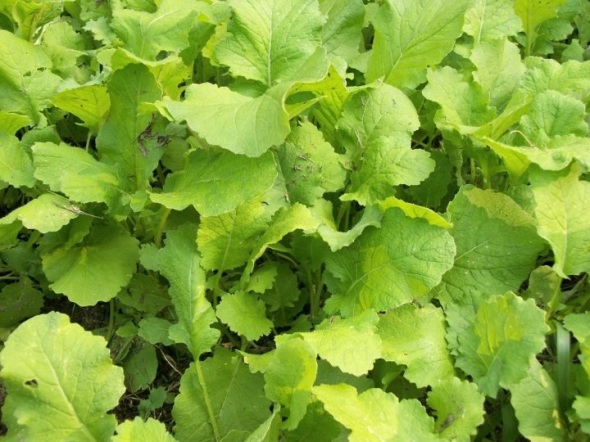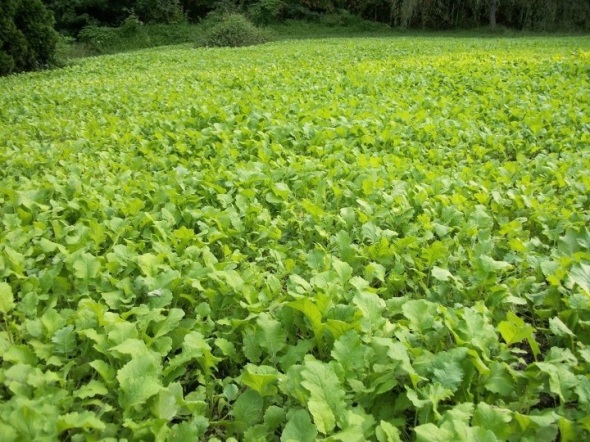Brassicas: The Ultimate Fall/Winter Food Source
Now, I’m not that serious of a food plot guy… yet. I mean, yes I plant one here and there. It might have some success, but not a whole lot. The thing is I don’t have the resources right now to really be 100% devoted to managing a plot all year round. Mostly due to me being at school 9 months out of the year. But that doesn’t mean I don’t know what I’m talking about. Being a bio major, I look at things a little differently. I like to ask why deer might prefer this forage over that, and what it is about that forage that helps the deer on a biological level. Not just, “oh if a buck eats this his antlers are gonna get bigger.”. I don’t see it like that. I wanna know what it is about that plant that allows a deer to reach that genetic potential, and what is occurring in his body to make that happen.
Well when I first heard about brassicas, these were the questions I asked myself. I wanted to know why this plant was becoming so popular with food plot fanatics. So like any “good” college student, I did my homework. Did some reading on the plant and found some interesting stuff about it.
The Brassica is a genus of the mustard family. It is closely related to the turnip and other types of cabbages. It has large broad leaves that can get extremely large when not grazed on. It develops a turnip head down below the soil that can grow extremely large, depending on the species you’re dealing with. The thing about these plants that make them so popular with whitetail hunters. Is they are a little bit more heartier than other forages, which allows them to stay greener longer and be hunted over longer.

But I wanted to know why deer liked these plants so much later in the year. Bill Winke on Midwest Whitetails talks repeatedly about how the deer pound these products good in the fall, but really hit them after a few frosts. Then it hit me. It’s just like many other plants, such as a lot of vegetables that we grow in our gardens. Have you ever had peas before they’re actually ready to be harvested? They’re bitter and nasty. The same thing happens with brassicas. You see the pea plant is harvested after the plant has hit a certain air temperature and triggers mechanisms in the plant to draw sugars out of the roots, and into the peas themselves. Giving them a sweet taste. That’s what happens to the brassicas. After a few colder temps hit them, a trigger is set off in the plant and sends the sugars in the large turnip head up into the leaves, changing the chemical composition of the leaves. This is what the deer love about it. It’s got a sweeter taste that to them is more palatable. The deer feed on this after much of the forage has already turned brown and died. Which is what makes brassicas such a wonderful fall and winter food source for whitetails.

It’s not just in the fall that deer like these plants either. Into the winter months when times are harsh, and food sources are thin. The deer will dig into the earth and eat the turnip portion of the plant. Which still has plenty of sugars left in it. Too me the winter months are crucial to growing trophy whitetails. A lot gets sucked out of a deer in these months, if he doesn’t have good enough resources to live off of in the winter. Minerals such as calcium are taken from the bones, along with vitamins and protein from muscle tissue. If poorly fed through the winter a deer can lose a lot of weight, jsut from feeding off of itself. When spring rolls around, depending on how much has been zapped out of the deer. He’s going to have to recover and regain all that he lost in the winter. If he’s ate good and been taken care of through the winter, it’s going to take less to get him back on track. Hopefully you see my point.

Now brassicas are not only loved by deer, they’re extremely good for them as well. These plants are planted in late August and early September, so they’re not really a part of your summer food plot program. But they still have a large amount of nutritional benefit for the deer. Besides a great plot program is a year round thing, not just a spring and summer commitment. They supply a large amount of carbohydrates and proteins. Which during the rut are highly crucial and need to be available in large quantities for the entire herd.
Overall I can understand why brassicas are in high demand during the fall months. Any hunter that hunts over food plots should get their hands on this forage and get it in the ground.
Here are the planting instructions for brassicas, via Food Plot Resources (foodplotresources.com)
Longevity:Less than 6 months of grazing time
Adaptation Zone:Entire Eastern U.S. and Plains. Excels as a winter plot option from the upper South into Canada.
Seeding Rate:4 lbs/acre (5-6 lbs/acre creates a denser forage canopy which can help decrease weed and grass growth).
Seeding Date:Deep South (September-October); Central (late August-September), North (August-September).
Soil Requirement:Most soil types are adequate
Sunlight Requirement:Medium-high
Seeding Depth:1/4 – 1/2 inch
Soil pH:5.0-8.0 (6.5-7.5 is ideal)
Fertilizer Requirement:Medium-high (nitrogen, phoshorous and potoassium)
Palatability:High (especially after using for consecutive years)
Browsing Tolerance:Low
Average Seed Price
(per acre):Rape $7; Purple Top Turnips $10; Improved Forage Turnips $14; Brassica varieties (rarely carried in retail stores).
Herbicide Options:Poast will kill grass.

Leave a comment